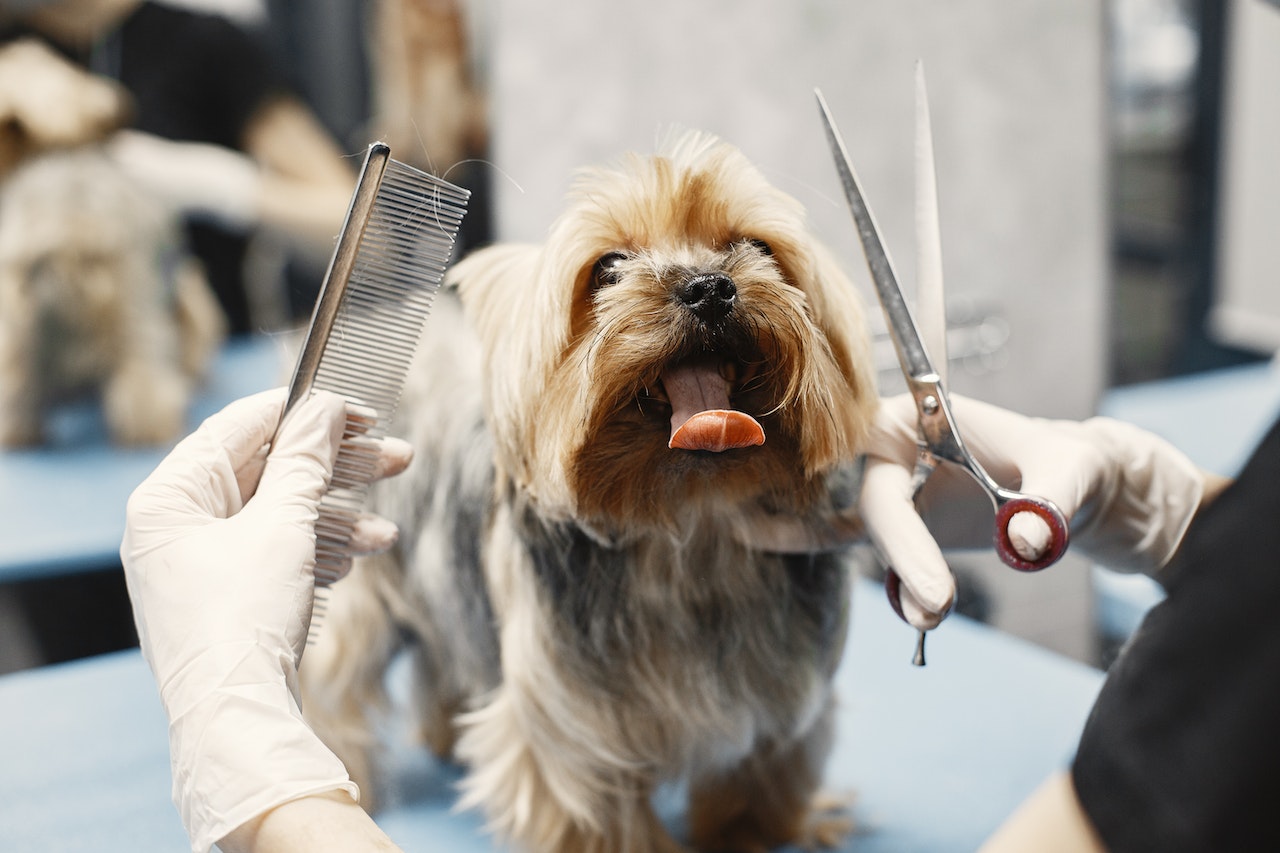Grooming is not just about keeping your dog looking good; it plays a crucial role in their overall well-being. Regular grooming not only helps maintain a healthy and shiny coat but also has a significant impact on your pet’s health. In this article, we explore the link between dog grooming and overall well-being, highlighting how regular grooming practices can benefit your furry companion’s health.
Skin and Coat Health
Regular grooming practices, such as brushing and bathing, contribute to the health of your dog’s skin and coat. Brushing helps remove loose hair, dirt, and debris while stimulating the production of natural oils, which nourish the skin and promote a shiny coat. It also aids in the early detection of skin issues like dryness, rashes, or infections.
Bathing your dog with appropriate dog-friendly shampoos helps cleanse the skin, remove allergens, and prevent skin irritations. It also helps control excessive oiliness or dryness, depending on your dog’s specific needs. Regular bathing and drying techniques are essential in preventing fungal or bacterial growth that can lead to skin infections.
Expert dog groomer, Taylor Vader emphasizes that a healthy skin and coat not only enhance your dog’s appearance but also serve as a barrier against external elements, reducing the risk of allergies and infections.
Preventing Matting and Hair Knots
Regular grooming sessions involving brushing and combing help prevent matting and hair knots in your dog’s coat. Matting occurs when loose hair becomes tangled and clumps together, leading to discomfort, skin irritations, and restricted blood flow.
By establishing a consistent grooming routine, you can prevent matting and hair knots. Regular brushing removes loose hair, prevents tangles, and allows air circulation to the skin. For dogs with longer hair, using specific grooming tools like slicker brushes or detangling combs can help maintain a tangle-free coat.
Taylor Vader notes that untreated matting can become severe, requiring professional intervention, which may involve shaving the coat. By practicing regular grooming, you can minimize the risk of matting, ensuring your dog’s comfort and well-being.
Early Detection of Health Issues
Regular grooming sessions provide an opportunity to spot potential health issues early on. During grooming, you can observe your dog’s skin, coat, ears, and nails, allowing you to identify any abnormalities or changes that may require veterinary attention.
Carefully inspect your dog’s skin for redness, bumps, hot spots, or signs of parasites like fleas or ticks. Check their ears for signs of infection, excessive wax buildup, or odor. Trimming your dog’s nails not only prevents discomfort but also helps you notice any nail or paw-related problems.
By conducting thorough and regular grooming sessions, you become familiar with your dog’s normal appearance and can quickly identify any deviations, enabling timely intervention and necessary medical care.
Bonding and Behavioral Benefits
Grooming sessions offer an excellent opportunity to strengthen the bond between you and your furry companion. Dogs enjoy the attention, touch, and closeness that grooming provides, fostering trust and a sense of security.
Regular grooming can also have behavioral benefits. It helps your dog become accustomed to being handled, promoting calmness and reducing anxiety during veterinary visits or other grooming procedures. Additionally, grooming sessions provide an opportunity to reinforce positive behaviors, such as sitting still or accepting touch, through rewards and praise.
By engaging in regular grooming with your dog, you not only enhance your relationship but also contribute to their overall emotional well-being.
Maintaining Oral Health
Many dog owners overlook the importance of oral hygiene, but it is a crucial aspect of your pet’s overall health. Incorporating dental care into your grooming routine can help prevent dental diseases, such as gum inflammation, plaque buildup, and tooth decay.
Regularly brushing your dog’s teeth using dog-friendly toothpaste and a soft-bristled toothbrush can remove food particles and prevent the formation of tartar. This simple practice promotes good oral health, freshens their breath, and reduces the risk of periodontal diseases.
In addition to brushing, consider providing dental chews or toys designed to improve oral health. Consult with your veterinarian for guidance on maintaining your dog’s oral hygiene and any additional dental care needs.
Conclusion
Regular grooming is not only about aesthetics; it plays a vital role in maintaining your dog’s overall well-being. By practicing proper grooming techniques, you can promote a healthy skin and coat, prevent matting, detect health issues early, strengthen the bond with your pet, and support their oral health. Make grooming a regular part of your dog’s care routine for a happier and healthier companion, and if you are struggling to keep up with it on your own seek professional help from dog grooming experts like Taylor Vader of Garden Ridge, Texas.

